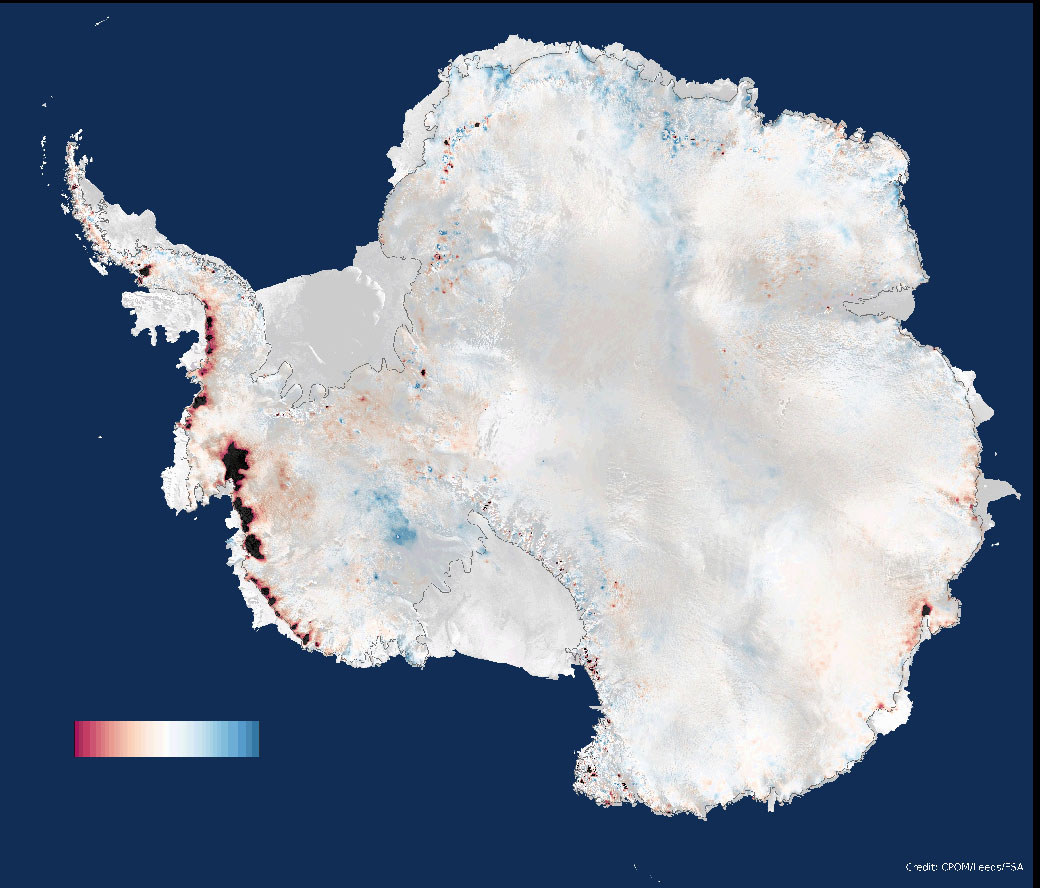TORONTO – A team of scientists out of the United Kingdom has found that Antarctica is losing twice as much ice since it was last surveyed from 2005-2010.

The study found that between 2010 and 2013 the massive continent lost 159 gigatonnes of ice each year. That’s enough to raise global sea levels by 0.45 millimetres each year, as evidenced in parts of the South Pacific Ocean.
READ MORE: Parts of West Antarctic ice sheet beginning slow collapse studies show
West Antarctica was by far the largest contributor to the ice loss, with 134 gigatonnes lost during those years. East Antarctica lost three gigatonnes and the Antarctic Peninsula lost 23 gigatonnes. The major cause of the melt is believed to be thinning glaciers in the Amundsen Sea in West Antarctica.
“Our study indicates that Antarctica’s contribution to sea level rise is approximately twice what it was previously estimated to be,” Malcolm McMillan, of the School of Earth and Environment at the University of Leeds told Global News in an email. “Irrespective of the cause, this is likely to be of concern to people living in regions threatened by sea level rise.”
The researchers from the UK Centre for Polar Observation and Modelling as well as the University of Leeds used data collected by the European Space Agency’s CryoSat-2 satellite mission.
CryoSat-2 carries a radar altimeter that allows it to pierce through the cloud cover, enabling it to observe areas over Antarctica during prolonged dark periods or during bad weather.
Polar ice sheets, including those in the Arctic, are a major contributor of rising sea levels. In the Pacific Ocean sea levels have already risen by an average of 1.7 mm per year over the past 100 years.
READ MORE: Volcano discovered beneath West Antarctica
“The ice loss in West Antarctica is caused by warm ocean water reaching the coast in this region and melting the underside of the floating ice shelves,” McMillan said.
“Understanding exactly why a substantial volume of warm water is reaching the ice shelves is challenging and it is essential that more detailed observations of both the ice sheet and the ocean are acquired, in order to better understand why these changes are occurring.”
“Although we are fortunate to now have, in CryoSat-2, a routine capability to monitor the polar ice sheets, the increased thinning we have detected in West Antarctica is a worrying development,” said Andrew Shepherd, a professor from the University of Leeds in a statement. “It adds concrete evidence that dramatic changes are underway in this part of our planet, which has enough ice to raise global sea levels by more than a metre. The challenge is to use this evidence to test and improve the predictive skill of climate models.”
The ice that is melting is different from the sea ice extent — the expanse of ice — that has shown growth over the past few years.
“The trend in sea ice extent is a bit regionally dependent,” said Julienne Stroeve, a senior scientist from the National Sea Ice Data Center in the United States told Global News.
And the West Antarctic is the region that is seeing the most warming on the continent. It’s no coincidence that that’s where more of the ice is disappearing.
“I wouldn’t look at what’s happening in Antarctica in terms of the ice sheet as being contradictory to what’s happening in the sea ice environment,” Stroeve said.



Comments